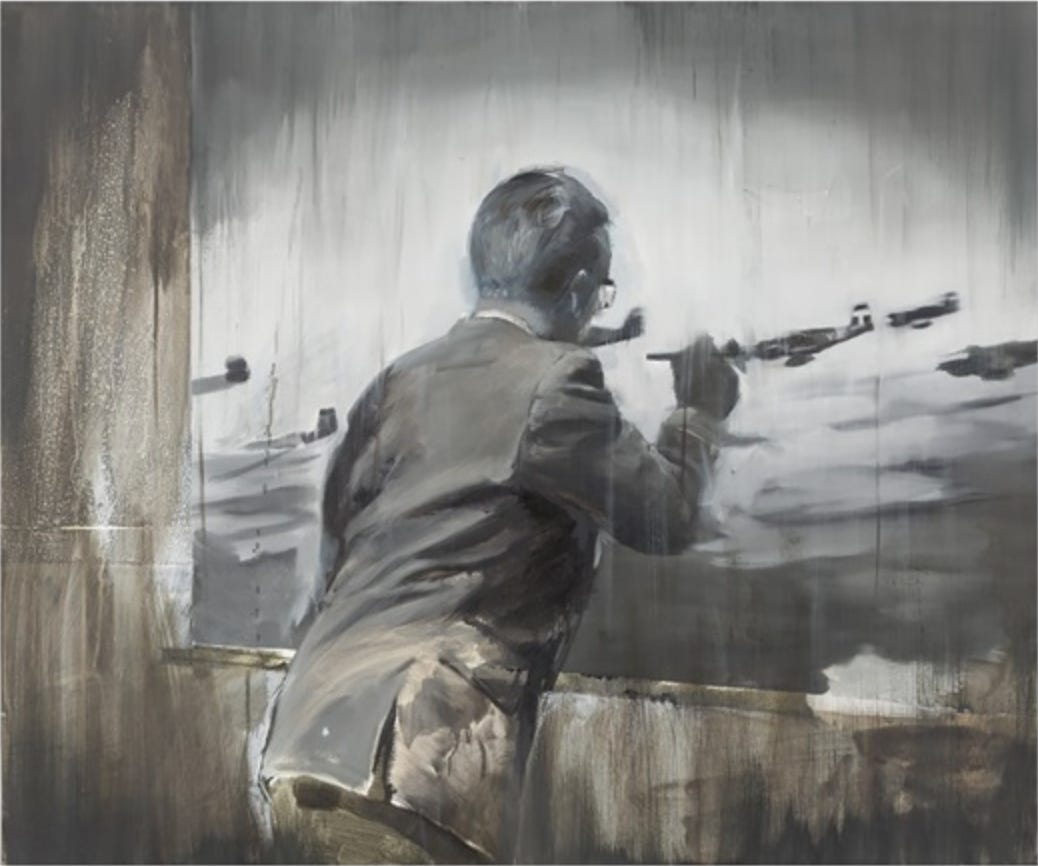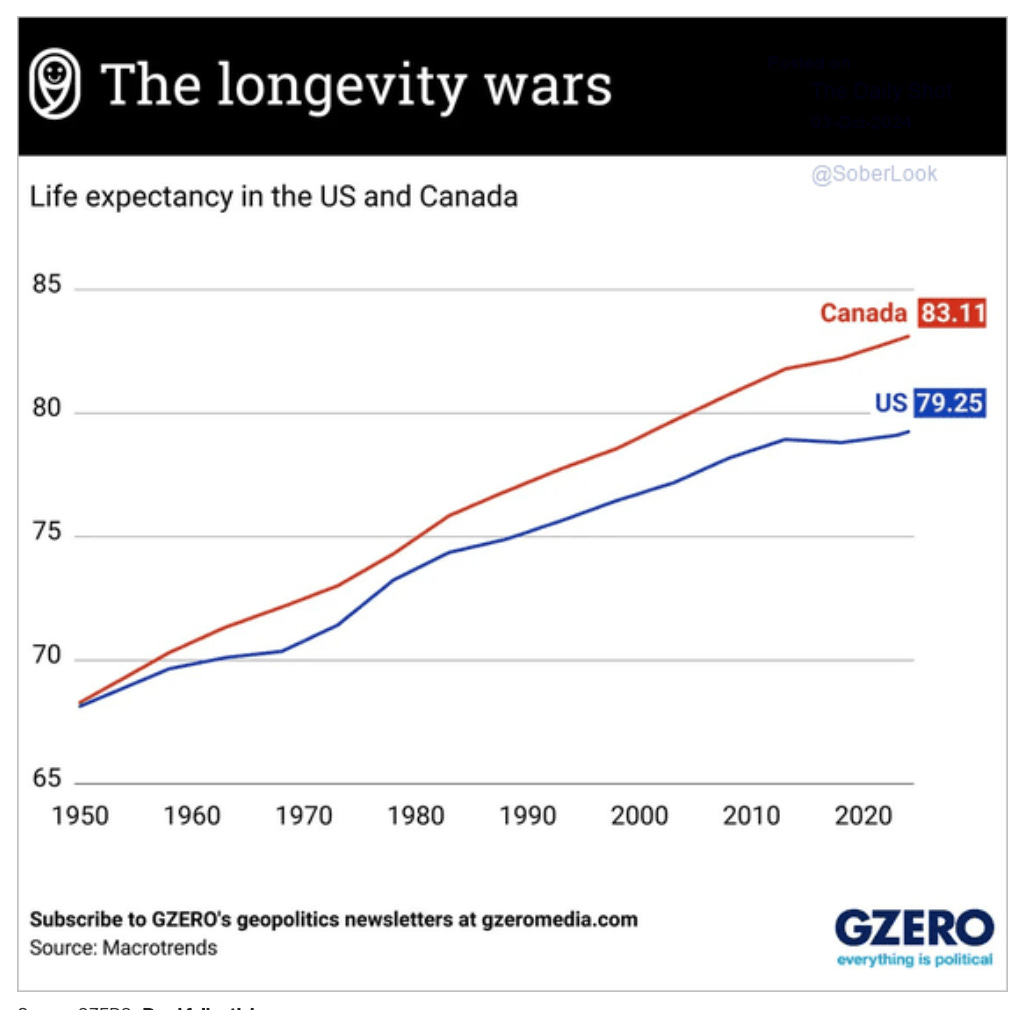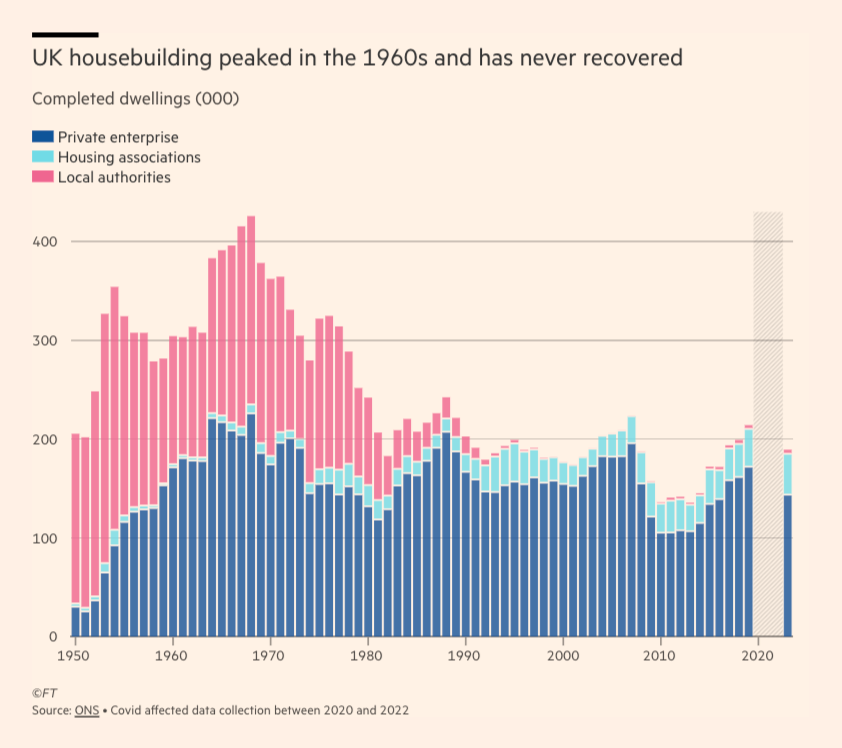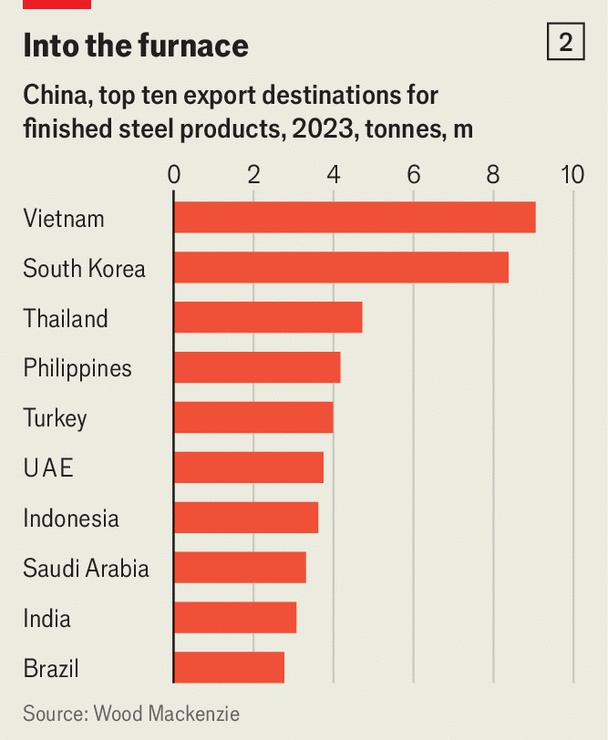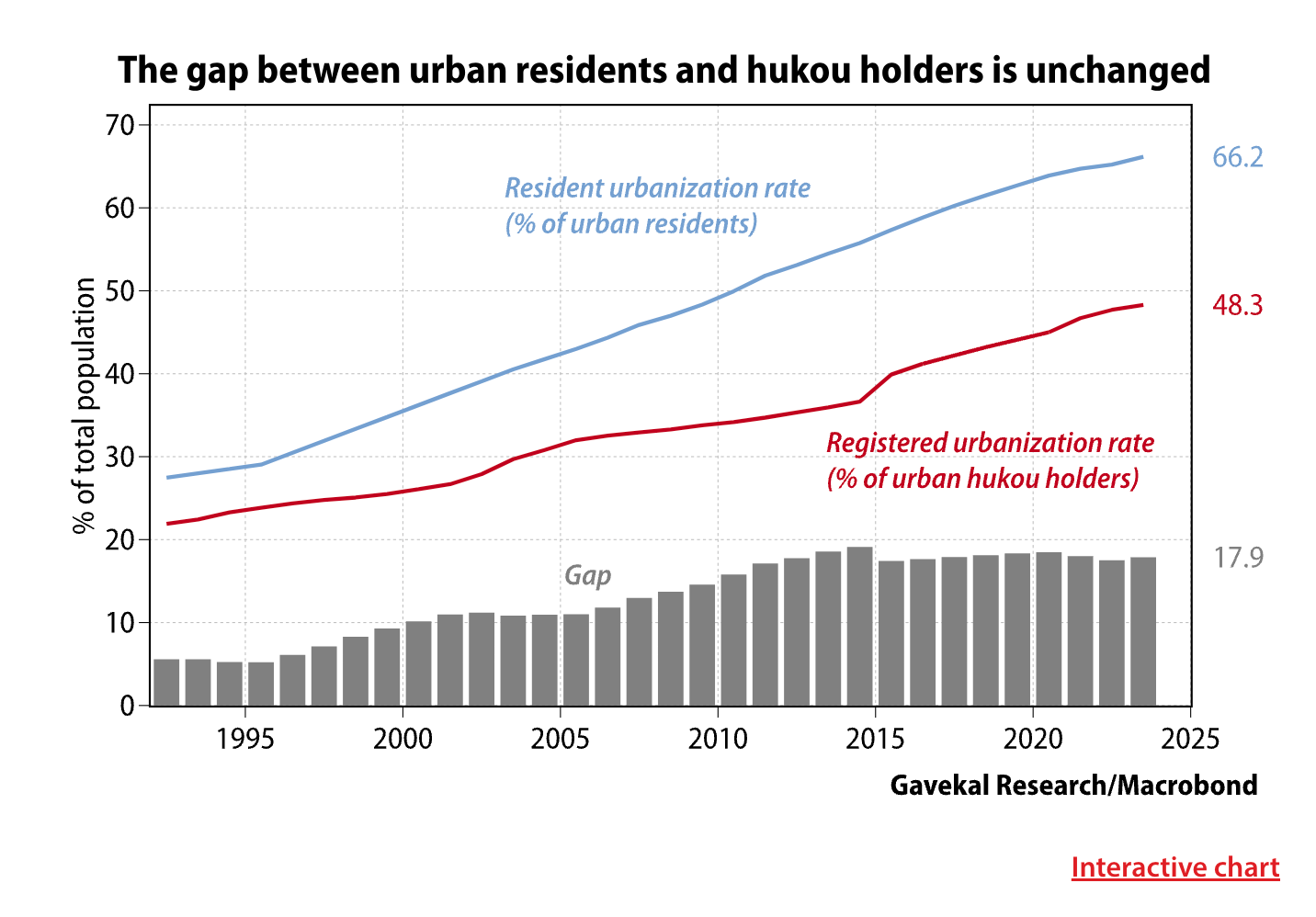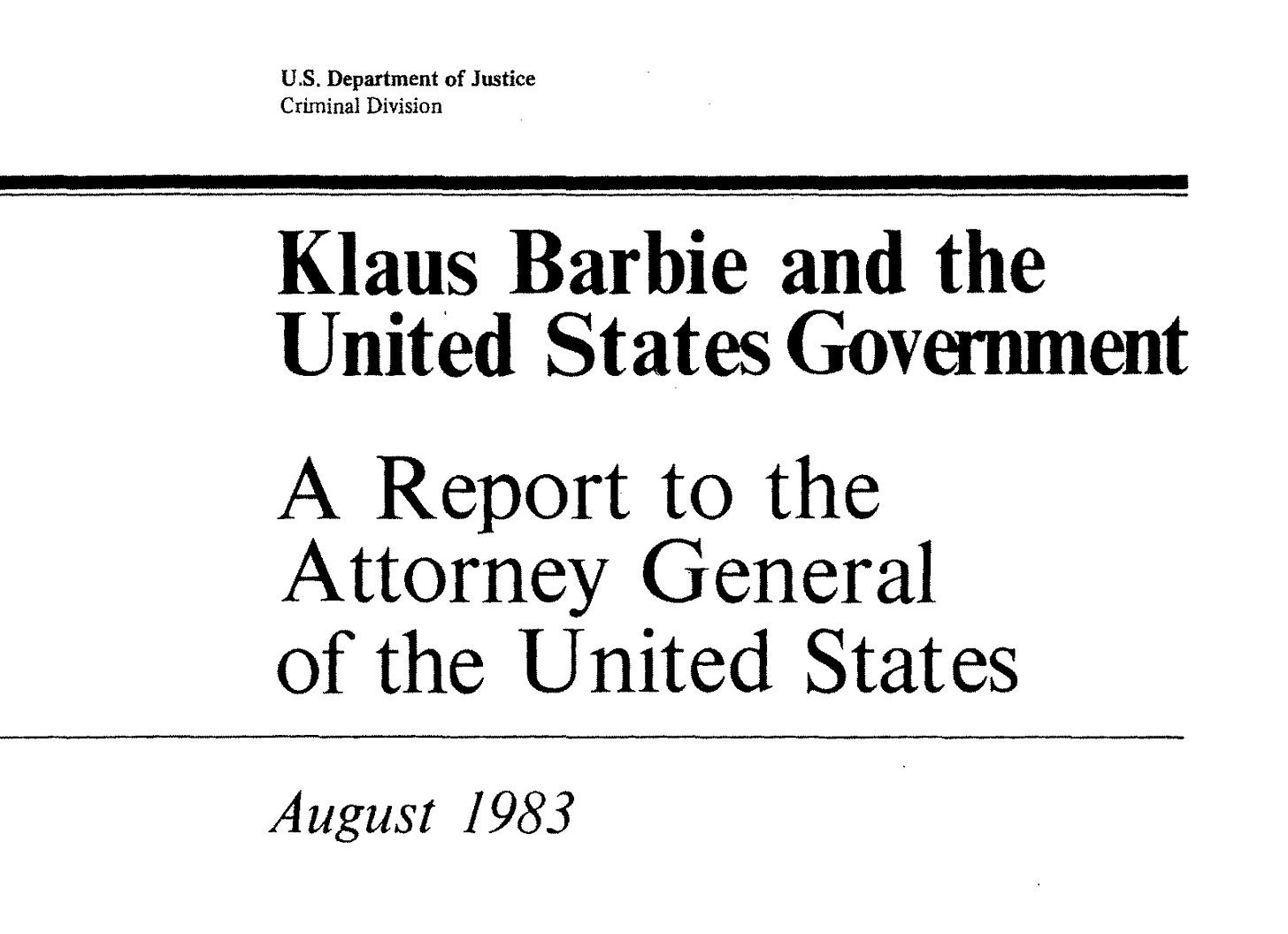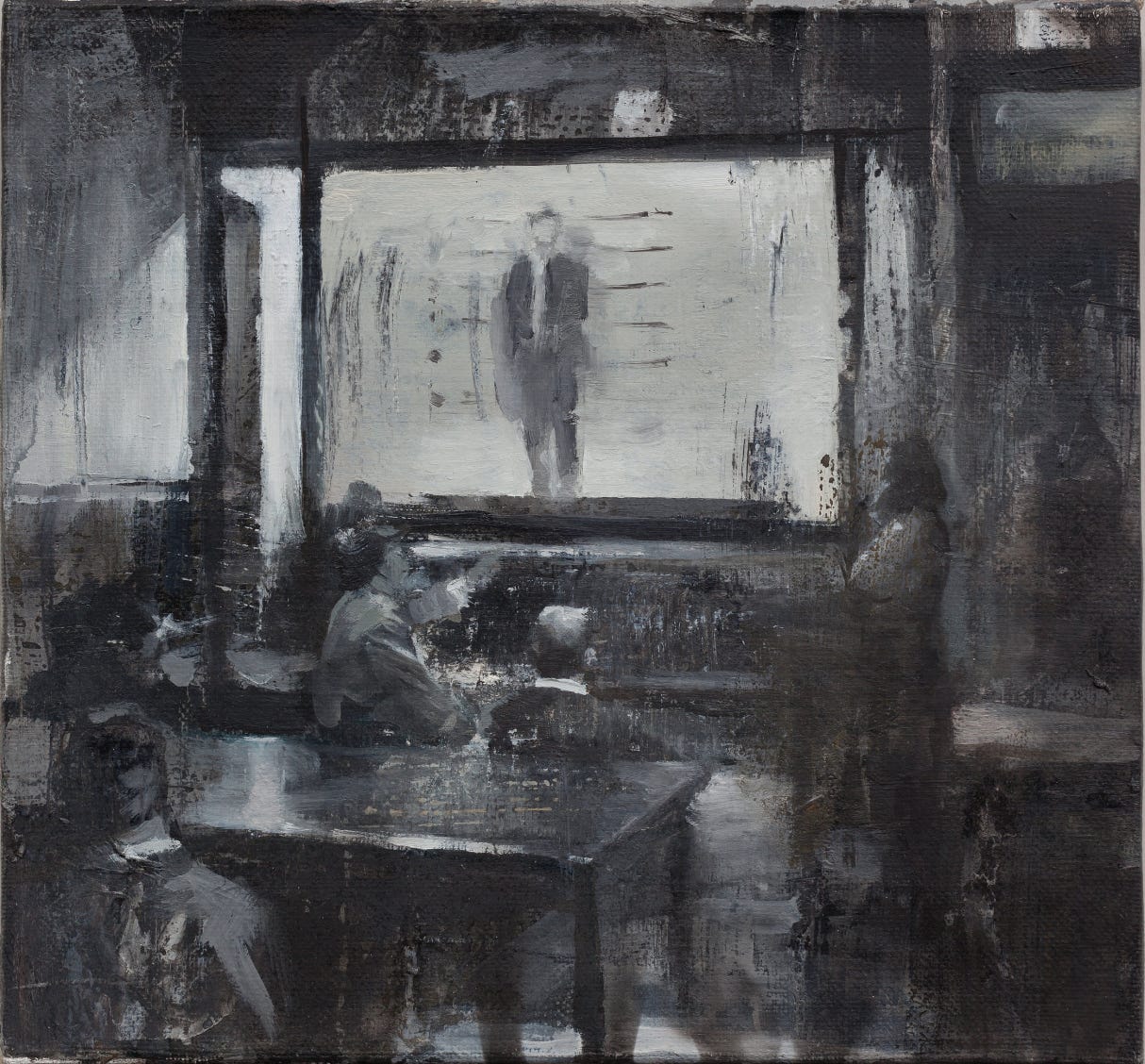China’s steel export surge. Fredric Jameson’s radical conscription idea. Klaus Barbie and Cold War Intelligence in Germany and the US.
Great links, images and reading from Chartbook Newsletter by Adam Tooze
Hi, thank you for opening the Chartbook email.
Daniel Pitín(Czech, born 1977) “Gerhard Richter in the Studio”, 2006.
How Canadians ended up living longer than Americans.
Central banks are cutting rates. But we are still far a reversal of the concerted tightening we saw in 2022.
At its peak, UK housing construction was a mixed economy of public and private construction
Source: Financial Times
China’s steel exports may be surging, but not to the West!
These days most of China’s steel exports go to the developing world, which accounted for nine of the top ten foreign destinations for its steel in 2023 (see chart 2). Unlike in the rich world, demand for the metal is roaring in much of the global south. India’s steel consumption, for instance, is expected to grow by 8% this year and at a similar rate next year thanks to a boom in infrastructure investment, according to the World Steel Association, an industry group. The Belt and Road Initiative (BRI), China’s global infrastructure bonanza, has helped its steelmakers expand their global reach. Chinese construction companies building ports and laying railways in poorer countries have done so largely with Chinese steel.
Yet steelmakers in developing countries are also starting to grumble about Chinese exports. In August Thachat Viswanath Narendran, the boss of Tata Steel, India’s biggest steelmaker, complained of “predatory pricing” by Chinese competitors. As in the West, governments in the global south are taking notice. This month India announced that it would impose tariffs of up to 30% on some steel products from China. Brazil, Mexico, Thailand and Turkey have also slapped tariffs on Chinese steel this year. Vietnam, the biggest export destination for Chinese steel, is also undertaking anti-dumping
Source: The Economist
HEY READERS,
THANK YOU for opening the Chartbook email. I hope it brightens your week.
I enjoy putting out the newsletter, but tbh what keeps this flow going is the generosity of those readers who clicked the subscription button.
If you are a regular reader of long-form Chartbook and Chartbook Top Links, or just enthusiastic about the project, why not think about joining that group? Chip in the equivalent of one cup of coffee per month and help to keep this flow of content coming.
And when you sign up, there are no more irritating “paywalls”
Modi’s rice challenge … Having imposed limits on rice exports, India’s PM
For contributing subscribers only.
China’s unequal urbanization
The new document on urbanization released by China’s government recently, does address the biggest historical impediment to urbanization: the household registration (or hukou) system. Over the past decade, policymakers have substantially liberalized that system; cities with fewer than 3mn people have scrapped all restrictions on obtaining a local hukou. But the relaxation has not led to a major take-up: the gap between the share of the population residing in urban areas and those with an urban hukou has remained unchanged at 15-20 pp over the past decade, despite official pledges to narrow it.
There are two reasons why rural migrants are not obtaining urban household registrations. The first is that many rural migrants have moved to where wage premiums are the highest, which means the largest cities. Smaller cities may have dropped their hukou restrictions, but those with more than 5mn people have only slightly loosened them. And the very largest cities such as Beijing and Shanghai have actually tightened restrictions in recent years.
Source: Gavekal Research
Daniel Pitín, “Swimming”, 2020
Source: NICODIM
The late Fredric Jameson’s extraordinary proposal for Universal Conscription and the Citizens' Army marked a truly strange twist of American radical thought in the Trump era.
The army we currently have is what is called a volunteer army, that is, a commercial profession like any other. I need not remind us of the history of citizen armies, from the Greeks to Machiavelli, and very much including the French Revolution. These armies, based on the draft, had political missions, most notably in modern times to forge the nation out of a variety of local and provincial populations sometimes not even speaking the national language (itself a political creation of the new national state). To be sure, nowadays the media have already done that for us, but the usefulness of the analogy lies in the fact that, in our federal system, the army is virtually the only institution to transcend the jurisdiction of state laws and boundaries, divisions which were among the most important counterrevolutionary principles embedded in the American Constitution, itself one of the most successful counterrevolutionary schemes ever devised. No genuine systemic change can take place here without an abrogation of the Constitution — a foundational fetish, as I have claimed, and a document the left itself would be as loath to forfeit as the right, owing to the protections of the Bill of Rights. The signal advantage of the army as a system is that it transcends that document without doing away with it; it coexists with it at a different spatial level and becomes thereby a potentially extraordinary instrument in the erection of dual power.
As for the draft, it is preeminently symbolic that Nixon ended the draft in order to put an end to popular, and in particular student, resistance to the war in Vietnam (Johnson had already modified the draft with hosts of class and racial exemptions in order to limit its political impact). More recently, during the Iraq war or what we may call the Rumsfeld period, this professional army has been further privatized — and I insist on the relevance of this word for the way it underscores the relationship with the variety of other economic or free-market privatizations all over the world inaugurated by the Reagan-Thatcher regimes. Rumsfeld further privatized this already specialized and salaried private army by outsourcing many of its functions to private corporations of the Blackwater type, and by introducing complex advanced technology in order to render other portions of the military workforce redundant — that is, by downsizing them via mechanization (a process Marx described in Capital). This very significant moment in the history of the modern army had a political purpose above and beyond its adaptation of current late-capitalist business practices: that purpose was to remove this small professionalized group possessing Weber’s proverbial monopoly of violence (currently only .05 percent of the population) from any possibility of mass democratic action and, further, to assimilate it to the structure of the police force, which it seems now to have become on a global scale.
So the first step in my utopian proposal is, so to speak, the renationalization of the army along the lines of any number of other socialist candidates for nationalization …by reintroducing the draft to transform the present armed forces back into that popular mass force capable of coexisting successfully with an increasingly unrepresentative “representative government,” and transforming it into a vehicle for mass democracy rather than the representative kind.
Inasmuch as the army continues to be associated with the various coups d’état of modern times all over the world, as well as with all the wars it has been called on to wage in recent years, I will at once specify the most important steps in the process. First of all, the body of eligible draftees would be increased by including everyone from sixteen to fifty, or, if you prefer, sixty years of age: that is, virtually the entire adult population. Such an unmanageable body would henceforth be incapable of waging foreign wars, let alone carrying out successful coups. In order to emphasize the universality of the process, let’s add that the handicapped would all be found appropriate positions in the system, and that pacifist and conscientious objectors would be placed in control of arms development, arms storage, and the like.
Now I need to remind you of the breadth of the military system, particularly under the pre-Rumsfeld dispensation. We have already begun with medical attention, and in particular the veterans’ hospitals, which are currently in desperate straits, at the very moment when hospitals themselves, the private kind, have become big business in the United States. In our new universal system, of course, the military hospitals would become a free national health service open to everyone (insofar as everyone is now a service person or a veteran) and the entire center of gravity of universal health care, and also, I would add, pharmaceutical production, disease control, and experimentation with and production of new medicines, would now be reorganized and situated within the army itself.
We may also assume a reorientation of education itself under military auspices, not merely for the children of this military population but for various advanced degrees. Nowadays it is difficult to think of any kind of advanced training, save perhaps for business schools, that would not be required within this system (the Army Corps of Engineers is the obvious example). We may think of the socialist (or ex-socialist) countries for models of our situation, in which the various armies included such functions as the manufacture of clothing, the production of films, the eventual production of motor vehicles, and even (as in China) a writers’ union, in which intellectuals and writers and artists found their space and income. The army is also notoriously the source of manpower for disaster relief, infrastructural repair and construction and the like; the question of food supply would immediately place this institution (if it can still be called that) in charge of the ordering and supply of food production and therefore in a controlling position for that fundamental dietetic and agronomic activity as well.
Source: verso
Paul North in conversation with Wendy Brown about the new translation of Volume I of Das Kapital by Paul Reitter.
For subscribers only.
On Klaus Barbie and German and US Cold War intelligence
The man who Germany's foreign intelligence agency, the Bundesnachrichtendienst (BND), listed in its files as Wilhelm Holm belonged to a unique species in the shadowy world of intelligence. The overweight German businessman with the carefully combed dark hair was a so-called "tipper."
Whenever Holm noticed someone during his travels around the world who seemed to have the makings of an agent, he would send a message to BND headquarters in Pullach near Munich. In 1965, for example, after he had spent four weeks in the Bolivian capital La Paz, he raved about a fellow German who had two important virtues: He was apparently a staunch German patriot and a "committed anticommunist" -- something that was practically a badge of honor during the Cold War era.
A few weeks later, the BND hired the new man as an agent. He was given the code name "Adler" (eagle) and the registration number V-43118. "Adler" lived in La Paz under the name Klaus Altmann.
But Altmann wasn't his real name. In reality, he was one of the vilest criminals of the Nazi dictatorship: Klaus Barbie, the notorious "Butcher of Lyon." After the war, French courts sentenced Barbie, the former head of the Gestapo in Lyon, to death in absentia. There are many indications that the BND was aware of all of this when it decided to hire him.
Source: Spiegel
Source: US Department of Justice
Daniel Pitín "Untitled (School)" (2010)
If you have scrolled this far, you know you want to click:




